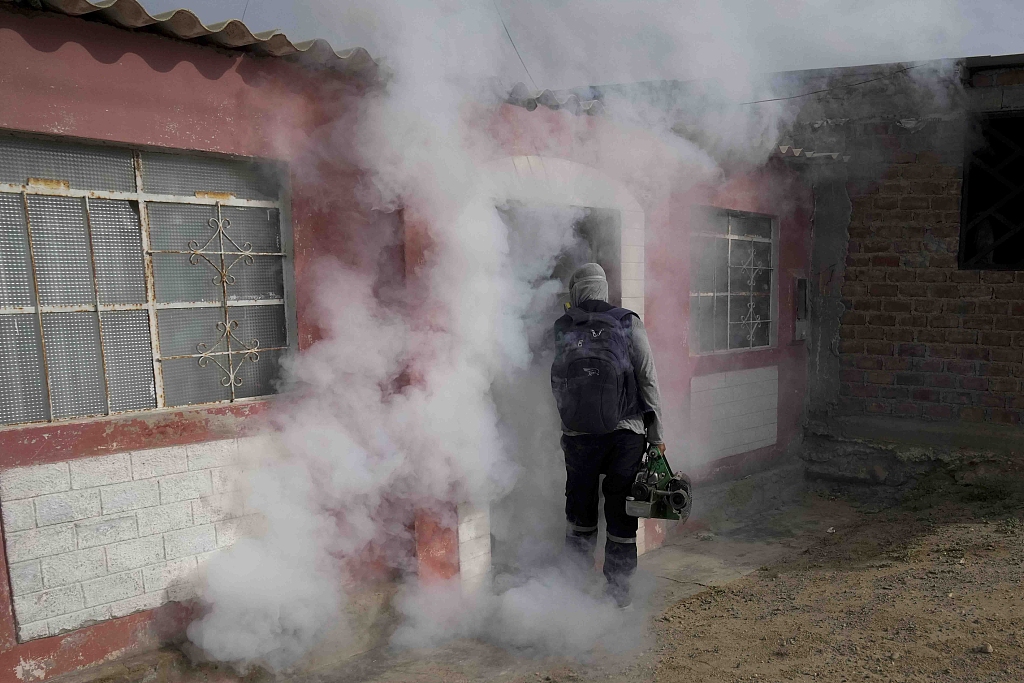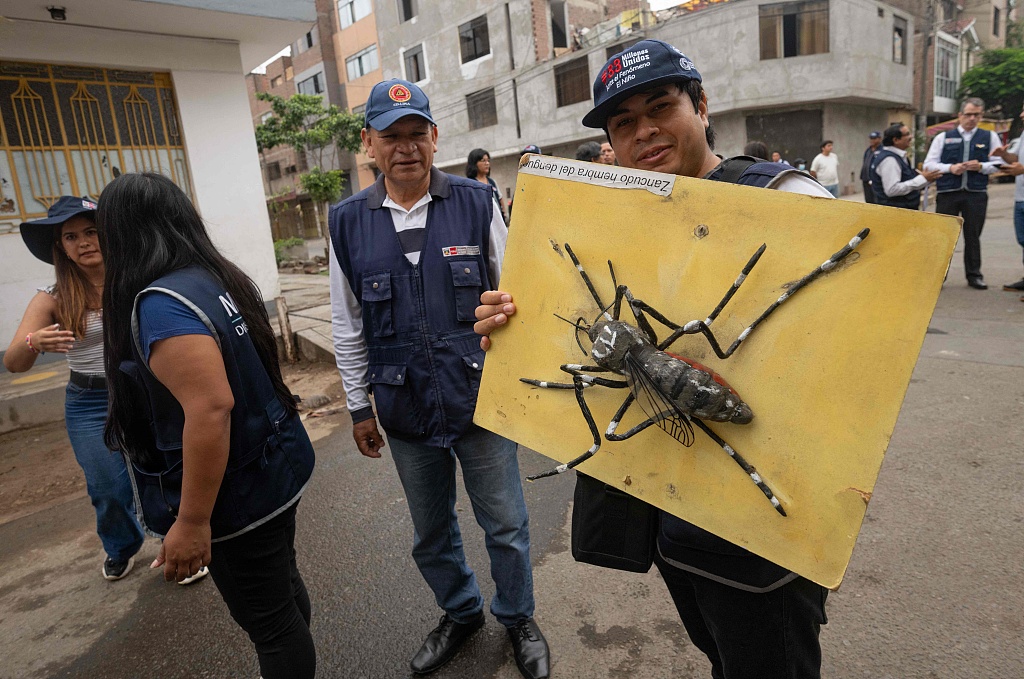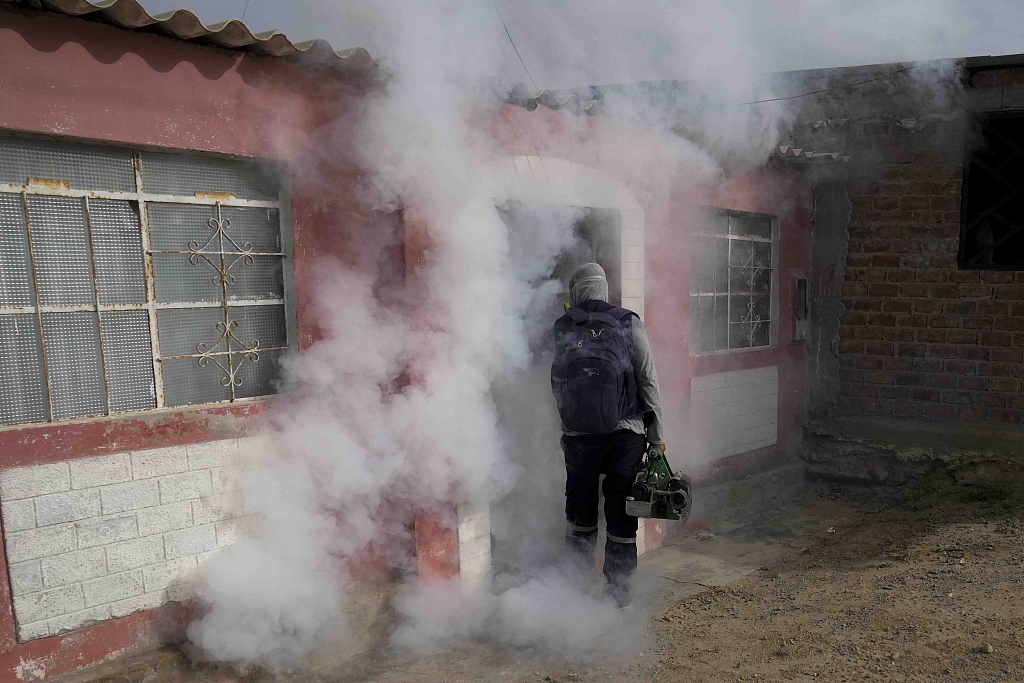Deaths caused by the mosquito-borne dengue disease have more than tripled in Peru so far this year, according to data from the South American nation’s government, which is redoubling efforts to contain an epidemic that has hit poor areas the hardest.
The government of President Dina Boluarte this week said it had approved an “emergency decree” allowing extraordinary economic measures to bolster the plan to counter the outbreak, which experts say is exacerbated by climate change.
 A health worker leaves a home after fumigating it for mosquitoes to help mitigate the spread of dengue in the Las Penitas area of Talara, Peru, March 1, 2024. /CFP
A health worker leaves a home after fumigating it for mosquitoes to help mitigate the spread of dengue in the Las Penitas area of Talara, Peru, March 1, 2024. /CFP
A health worker leaves a home after fumigating it for mosquitoes to help mitigate the spread of dengue in the Las Penitas area of Talara, Peru, March 1, 2024. /CFP
Mild symptoms include nausea, rashes and body pains, while a rarer severe form, more threatening for infants and pregnant women, can cause internal bleeding and is potentially fatal.
Peru’s Ministry of Health said that as of Thursday, there were 117 registered deaths from dengue so far this year, compared with 33 in the same period of 2023. Suspected cases have also more than tripled to reach some 135,000.
Over the past few days, health officials have carried out fumigations in poor neighborhoods across Lima, the capital, including in cemeteries where mosquitoes have been found to breed in the water that gathers in vases honoring the deceased.
Experts say the figures in Peru are alarming because they show the ability of the Aedes aegypti mosquito, which carries the disease, to spread to areas where dengue had not previously been detected. The highest numbers of cases were recorded in the coastal and northern parts of the country, including Lima.
 A staff member of the Peruvian Ministry of Health shows an image of an Aedes aegypti mosquito at the populous district of El Agustino in Lima, Peru, February 27, 2024. /CFP
A staff member of the Peruvian Ministry of Health shows an image of an Aedes aegypti mosquito at the populous district of El Agustino in Lima, Peru, February 27, 2024. /CFP
A staff member of the Peruvian Ministry of Health shows an image of an Aedes aegypti mosquito at the populous district of El Agustino in Lima, Peru, February 27, 2024. /CFP
“The mosquito has been adapting to climate change and is reproducing at a faster rate than in previous years,” University of Lima epidemiologist Augusto Tarazona said.
Considering respective population sizes, Tarazona said that with an incidence rate of 330.27 cases per 100,000 people, Peru was seeing both higher infection and mortality rates than in either Brazil or Argentina.
“We are in a critical situation in Latin America,” he said.
(Cover: A health worker carries out fumigation for mosquitoes inside a home to help mitigate the spread of dengue in the Las Penitas area of Talara, Peru, March 1, 2024. /CFP)
Source(s): Reuters
